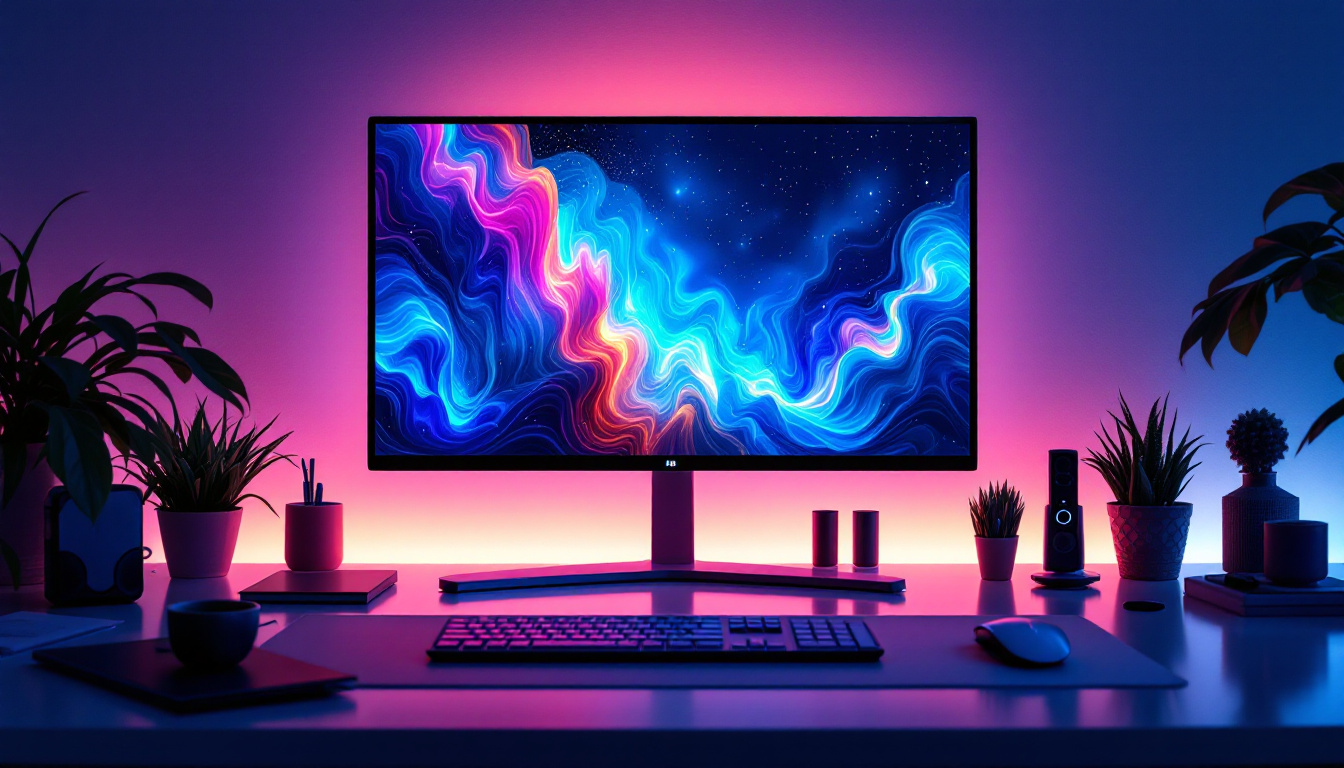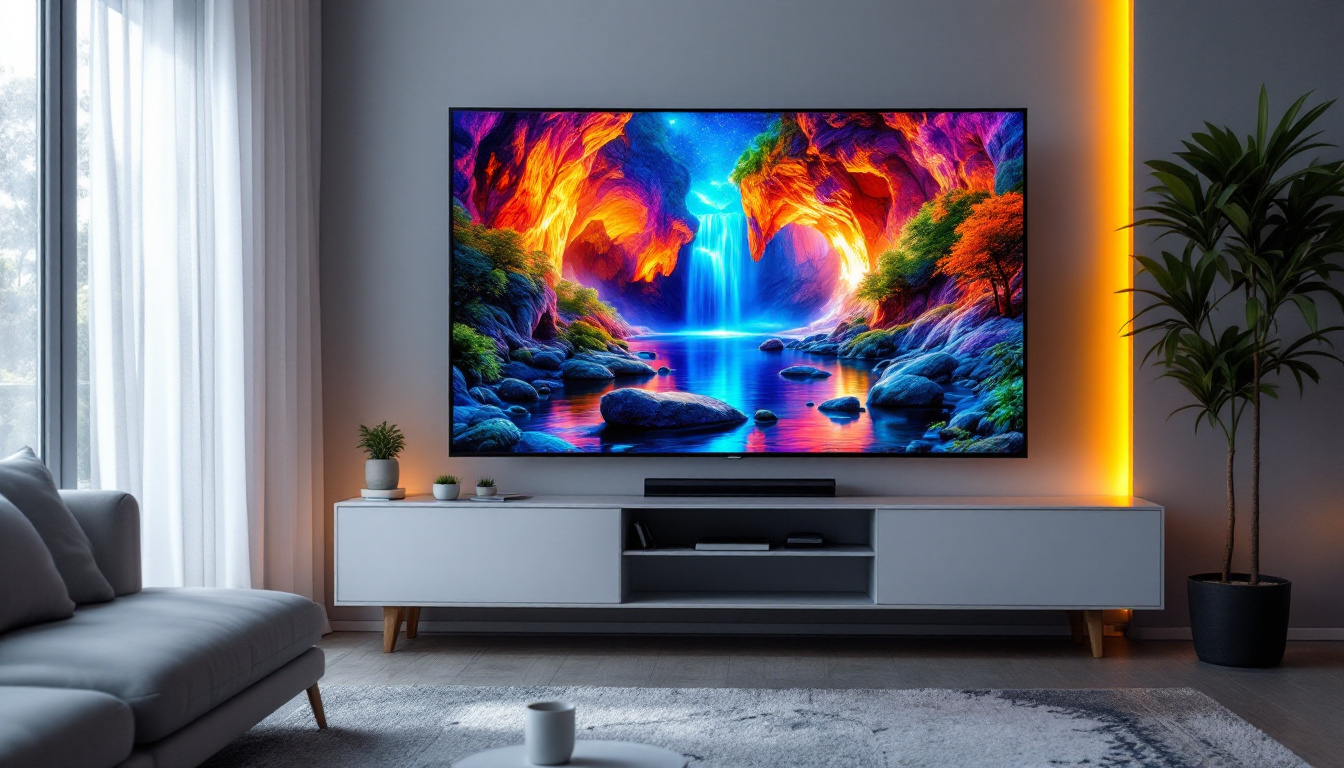In the rapidly evolving world of technology, interactive touch screens have emerged as a pivotal innovation, transforming how individuals and organizations engage with digital content. These displays are not only user-friendly but also versatile, catering to various applications, from education to corporate environments. At the heart of many of these touch screens lies LED (Light Emitting Diode) technology, which enhances the visual experience and interactivity. This article delves into the intricacies of interactive touch screens and the underlying LED display technology, exploring their functionalities, benefits, and applications.
Understanding Interactive Touch Screens
Interactive touch screens are devices that allow users to interact directly with what is displayed on the screen. This interaction can be through touch, gestures, or even stylus input, making them an essential tool in various settings. The design and functionality of these screens have evolved significantly, making them more intuitive and responsive. From the classroom to the boardroom, these screens are transforming how we engage with technology, offering a seamless blend of digital interaction and tactile feedback.
How Touch Technology Works
At its core, touch technology operates through various sensing methods. The most common types include resistive, capacitive, and infrared touch technologies. Each method has its unique way of detecting touch input. Understanding these technologies can help users choose the right type of screen for their specific needs, whether for personal use or in a professional setting.
Resistive touch screens consist of two thin layers separated by a small gap. When pressure is applied, the layers make contact, registering the touch. This technology is cost-effective and works well with gloves or styluses, making it suitable for industrial applications. Additionally, resistive screens are often more durable in harsh environments, where exposure to dust and moisture can be a concern.
Capacitive touch screens, on the other hand, utilize the electrical properties of the human body. When a finger touches the screen, it creates a change in capacitance, which is detected by the screen. This type of screen is more responsive and supports multi-touch gestures, making it ideal for smartphones and tablets. The rapid advancement in capacitive technology has also led to the development of features like palm rejection and pressure sensitivity, enhancing user experience across various applications.
Applications of Interactive Touch Screens
The versatility of interactive touch screens allows them to be used in a range of environments. In educational settings, they facilitate interactive learning experiences, enabling students to engage with content dynamically. Teachers can incorporate multimedia presentations, interactive quizzes, and collaborative projects, fostering a more engaging and effective learning atmosphere. Furthermore, these screens can accommodate diverse learning styles, catering to visual, auditory, and kinesthetic learners alike.
In corporate environments, they enhance presentations and meetings, allowing for collaborative work and real-time data manipulation. Interactive touch screens can serve as digital whiteboards, where teams brainstorm ideas, visualize data, and share information effortlessly. The ability to save and share notes or diagrams created during these sessions further streamlines communication and project management. Moreover, as remote work becomes more prevalent, these screens can bridge the gap between in-person and virtual meetings, providing a platform for interactive discussions regardless of location.
Moreover, retail environments leverage interactive touch screens to create immersive shopping experiences. Customers can browse products, view detailed information, and even make purchases directly from the screen. This not only improves customer engagement but also streamlines the purchasing process. Retailers can also use these screens for targeted advertising and promotions, tailoring content to individual customer preferences based on their interactions. As technology continues to advance, the integration of augmented reality features into touch screens promises to further enhance the shopping experience, allowing customers to visualize products in their own environment before making a purchase.
The Role of LED Technology in Touch Screens
LED technology plays a crucial role in enhancing the performance and visual quality of interactive touch screens. By utilizing light-emitting diodes, these displays offer several advantages over traditional display technologies, such as LCD (Liquid Crystal Display).
Benefits of LED Displays
One of the primary benefits of LED displays is their superior brightness and contrast levels. This makes them ideal for environments with varying lighting conditions, ensuring that content remains visible and vibrant. Additionally, LED displays consume less power compared to traditional displays, making them more energy-efficient and environmentally friendly.
Furthermore, LED technology allows for thinner and lighter screens, enabling sleek designs that are aesthetically pleasing and easier to install. The durability of LED displays also contributes to their longevity, reducing the need for frequent replacements.
Types of LED Displays
There are several types of LED displays used in interactive touch screens, including direct-lit, edge-lit, and OLED (Organic Light Emitting Diode) displays. Each type has its unique characteristics and applications.
Direct-lit LED displays feature a grid of LEDs behind the screen, providing uniform brightness across the entire display. This type is commonly used in larger screens, such as digital signage.
Edge-lit LED displays, on the other hand, use LEDs positioned around the edges of the screen. This design allows for thinner screens but may result in uneven brightness in some cases. OLED displays offer the best contrast and color accuracy, as each pixel emits its light, allowing for deeper blacks and more vibrant colors.
Interactivity and User Experience
The interactivity offered by touch screens significantly enhances user experience. Users can engage with content in a more natural and intuitive manner, leading to increased retention and satisfaction.
Multi-Touch Capabilities
One of the standout features of modern interactive touch screens is their multi-touch capability. This allows multiple users to interact with the screen simultaneously, fostering collaboration and teamwork. Multi-touch gestures, such as pinch-to-zoom or swipe, enable users to navigate content fluidly, making the experience more engaging.
In educational settings, multi-touch capabilities can transform traditional learning methods. Students can work together on projects, share ideas, and explore concepts interactively, leading to a deeper understanding of the subject matter.
User Interface Design
The design of the user interface (UI) is crucial in ensuring a seamless interaction experience. A well-designed UI should be intuitive and easy to navigate, allowing users to access information quickly and efficiently. This involves using clear icons, logical layouts, and responsive feedback to enhance usability.
Moreover, incorporating accessibility features into the UI design ensures that all users, regardless of their abilities, can interact with the screen effectively. This inclusivity is essential in educational and corporate environments, where diverse user groups are common.
Challenges and Considerations
While interactive touch screens offer numerous benefits, there are also challenges and considerations that need to be addressed. Understanding these challenges can help organizations make informed decisions when implementing touch screen technology.
Calibration and Maintenance
One of the primary challenges with interactive touch screens is the need for regular calibration and maintenance. Over time, screens may become less responsive or accurate due to wear and tear or environmental factors. Regular maintenance ensures that the touch screen remains functional and provides a positive user experience.
Additionally, organizations should consider the training required for staff and users to effectively utilize the technology. Providing adequate training can help minimize frustration and maximize the benefits of interactive touch screens.
Cost Considerations
Investing in interactive touch screen technology can be significant, especially for large installations. Organizations must weigh the initial costs against the long-term benefits, such as improved engagement and productivity. Budgeting for ongoing maintenance and potential upgrades is also essential to ensure the technology remains relevant and effective.
Future Trends in Interactive Touch Screens
The future of interactive touch screens looks promising, with advancements in technology paving the way for even more innovative applications. As technology continues to evolve, several trends are expected to shape the future of interactive displays.
Integration with Augmented Reality (AR)
One of the most exciting trends is the integration of interactive touch screens with augmented reality (AR). This combination allows users to interact with digital content in a more immersive way, overlaying information onto the physical world. For example, in educational settings, students could explore 3D models of historical artifacts or scientific concepts, enhancing their learning experience.
In retail, AR can be used to create virtual fitting rooms, allowing customers to try on clothes or accessories virtually before making a purchase. This not only improves customer satisfaction but also reduces return rates.
Enhanced Connectivity and Smart Features
As the Internet of Things (IoT) continues to expand, interactive touch screens are expected to become more connected and intelligent. Enhanced connectivity will enable screens to communicate with other devices and systems, creating a more integrated user experience.
Smart features, such as voice recognition and gesture control, will further enhance interactivity, allowing users to engage with content without physically touching the screen. This could be particularly beneficial in environments where hygiene is a concern, such as hospitals and public spaces.
Conclusion
Interactive touch screens equipped with LED display technology are revolutionizing the way individuals and organizations interact with digital content. Their versatility, user-friendly interfaces, and vibrant displays make them invaluable tools across various sectors, from education to retail.
Understanding the technology behind these screens, including the different types of touch and LED technologies, is essential for maximizing their potential. As advancements continue to shape the future of interactive displays, organizations must stay informed and adapt to emerging trends to enhance user engagement and satisfaction.
Ultimately, the integration of interactive touch screens into daily operations can lead to improved productivity, collaboration, and a more dynamic interaction with technology. As this technology evolves, it will undoubtedly continue to play a significant role in shaping the future of human-computer interaction.
Discover LumenMatrix’s Innovative LED Display Solutions
Ready to elevate your interactive touch screen experience? Explore LumenMatrix’s comprehensive range of cutting-edge LED display modules, designed to bring your digital content to life. From captivating Indoor and Outdoor LED Wall Displays to dynamic Vehicle and Sports LED Displays, our solutions are crafted to enhance brand visibility and create immersive visual experiences. Whether you’re looking to engage audiences with a Floor LED Display, make a statement with a Custom LED Display, or streamline your message with an All-in-One LED Display, LumenMatrix has you covered. Embrace the future of visual communication with our LED Transparent Display and revolutionize the way you connect with your audience. Check out LumenMatrix LED Display Solutions today and transform your space into a hub of engagement and creativity.































